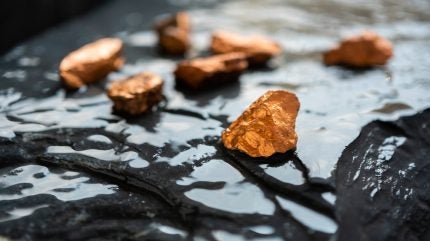Sign up for daily news updates from CleanTechnica on email. Or follow us on Google News!
Electric vehicle sales hit a speed bump last year, leading some observers to surmise that the dream of zero emission mobility was sputtering out. However, many automakers did not get the memo. One example is Hyundai, which has just unveiled a new lithium-iron-phosphate EV battery project in partnership with Kia, aimed at shepherding a new generation of affordable electric vehicles into the marketplace.
The Cost Of An EV Battery Is Coming Down Fast, But Not Fast Enough
To be clear, the cost of an EV battery has been dropping like a rock since the early 2000s. The most recent calculation from the Vehicle Technologies Office over at the US Department of Energy puts the drop at 90% for light-duty vehicles in the 15-year period from 2008 to 2023, based on 2023 constant dollars.
“The 2023 estimate is $139/kWh on a usable-energy basis for production at scale of at least 100,000 units per year. That compares to $1,415/kWh in 2008,” the VTO explained in a report dated August 4 of this year. “The decline in cost is due to improvements in battery technologies and chemistries, as well as improvements in manufacturing and increases in production volume,” they noted.
That’s mighty impressive, but the figure of $139 per kilowatt-hour still falls far short of the $100 goalpost for batteries set by the VTO. It’s also quite a long distance from VTO’s ultimate goal, which is to reduce the cost of an EV battery down to $80/kWh while also increasing range to 300 miles and cutting the charging time down to 15 minutes or less.
A New (Old) Recipe For A Low-Cost EV Battery, LFP Edition
As indicated by the VTO, automakers have been coming up with cost-cutting formulas to replace conventional lithium-ion EV batteries. Here in the US they are also getting a fresh burst of financial assistance in the form of a $2.8 billion carve-out for EV battery projects in the 2021 Bipartisan Infrastructure Law, aimed at bringing down the overall cost of electric vehicles.
One item on the menu is a lithium-iron-phosphate formula, which EV battery stakeholders have been eyeing since the early 2000s. As explained by the National Science Foundation back in 2009, LFP technology surfaced around the turn of the 21st century and soon gained currency in the fields of rechargeable power tools and medical devices, along with plug-in hybrid EVs. “LFP batteries are safer, less expensive and more environmentally friendly than most other rechargeable batteries,” the NSF observed.
So much for the good news. Engineering an LFP battery for a 100% electric vehicle has been a challenge. An achingly slow rate of discharge was one initial drawback, and it was a big one. Slow discharge basically means an electric car that won’t accelerate.
Energy density was another significant hurdle for LFP technology. The lower the energy density, the bigger the battery, and that typically translates into more weight, which impacts tire wear and tear as well as battery range.
Still, the attraction of replacing the nickel, cobalt, and other expensive materials used in conventional EV batteries was strong enough to keep LFP on the R&D radar. Another spark of motivation was added after President Joe Biden took office in 2021 with a manufacturing agenda focusing on shoring up the nation’s domestic supply chains.
Ford, for one, has seen enough improvement to take the LFP plunge. When Ford announced a re-alignment of its electric vehicle plans in August, the company noted that will produce an LFP EV battery at its BlueOval Battery Park in Michigan by 2026, making it the first US automaker to establish its own LFP production line.
For the record, Ford also noted that tax benefits under the 2022 Inflation Reduction Act were instrumental in planning for the LFP project (see more LFP battery background here).
Hyundai Hatches A Four-Year LFP EV Battery Plan
That brings us to the big news from Hyundai. In a move that validates Ford’s faith in LFP technology, Hyundai has partnered up with sister firm Kia to develop a new system for manufacturing LFP batteries, aimed at reducing costs.
The partnership, which also includes Hyundai Steel and the cathode materials firm EcoPro BM, aims to eliminate the precursor step commonly used in EV battery manufacturing. In an LFP battery, for example, the cathode (the positive electrode) is initially formed with precursor materials, and the lithium is added in another sequence.
The Hyundai venture aims to combine everything in one process. “The direct synthesis process simultaneously adds phosphate, iron (Fe) powder and lithium without creating a separate precursor. This eliminates the precursor production step, reducing hazardous substance emissions during manufacturing and lowering production costs,” Hyundai explains.
That sounds simple enough, but the devil is in the details, which explains why R&D program for Hyundai’s new EV battery falls under a four-year timeline.
“The direct synthesis process is environmentally friendly and cost-competitive compared to conventional processes. However, to increase production efficiency, ensuring impurity-free and uniformly sized raw materials is crucial,” Hyundai notes. The plan is to produce high-grade iron powder from recycled steel under the Hyundai Steel umbrella. EcoPro BM is tasked with synthesizing cathode material from the powder.
Why Wait For The LFP Battery Of The Future?
LFP has been running second-best to conventional lithium-ion battery formulas in terms of performance, but Hyundai and its partners aim to put that to a stop. Aside from reducing the cost of an EV battery, Hyundai is counting on the new LFP production process to yield a high-performing battery that can charge and discharge quickly, even at low temperatures.
To the extent that a significant drop in costs will translate into vigorous growth for EV sales a few years from now, that’s a good thing. Automakers like Hyundai will also need an affordability hedge once the EV market matures to the point where tax credits evaporate.
Meanwhile, millions of drivers — and fleet managers — have already seen enough affordability in the EV field, and Hyundai is determined to keep the momentum going.
Earlier this month Hyundai unveiled a refreshed version of its 2025 IONIQ 5 EV alongside a “rugged” off-road iteration called the IONIQ 5 XRT. In accord with the onshoring focus of the Biden administration, the new models will be made in the USA at the Hyundai Motor Group Metaplant America campus in Georgia.
Hyundai also expects that vehicles produced at the Metaplant will be eligible for a $3,750 federal tax credit on sales, with additional tax credits to follow. The automaker notes that it already passes along the full $7,500 tax credit on lease offers.
Follow me via LinkTree, or @tinamcasey on Threads, LinkedIn, and Instagram.
Image (cropped): Hyundai is planning the next step in electric vehicle affordability with a new lithium-iron-phosphate EV battery venture in partnership with Kia, Hyundai Steel, and the materials firm EcoPro BM (courtesy of Hyundai).

Have a tip for CleanTechnica? Want to advertise? Want to suggest a guest for our CleanTech Talk podcast? Contact us here.
Latest CleanTechnica.TV Videos
CleanTechnica uses affiliate links. See our policy here.
CleanTechnica’s Comment Policy




